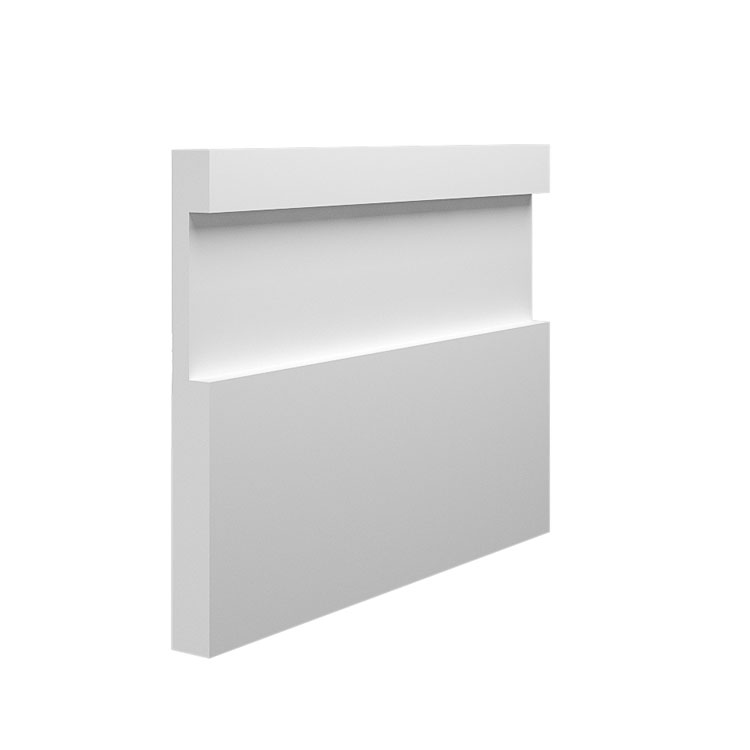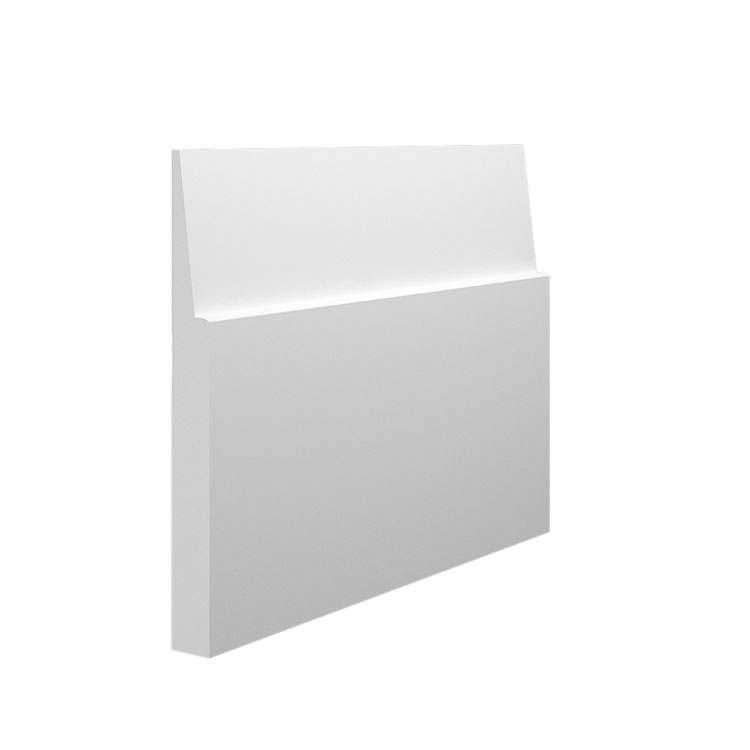
Modern Skirting Boards | Futuristic & Clean Designs
Posted by Lee Watkinson on 24th Oct 2025
Most homes carry skirting boards from decades past, designs chosen not for their merit but because they were simply available. If you're renovating or want walls that feel more intentional, modern skirting boards offer clean geometry, architectural presence, and profiles that work with contemporary spaces.

What makes skirting modern
The word modern gets used loosely. When people search for modern skirting boards, they're rarely looking for Bullnose or Torus profiles, even though those continue to be installed today.
Modern points towards designs with clean geometry, angular details, and architectural quality. Square elements, stepped sections, linear grooves instead of rounded curves.
Modern characteristics
- Square edges over curves
- Stepped layers create depth
- Linear grooves for shadow play
- Precision over ornament
Stepped profiles
Horizontal layers project outward, creating shadow lines that shift throughout the day. The geometry reads as deliberate and architectural.

Stepped 4
Four horizontal layers create pronounced depth. The stepped sections amplify as light moves across walls, making the geometry visible throughout the day.
Works particularly well in spaces with higher ceilings where layered detail can be appreciated.
View Stepped 4
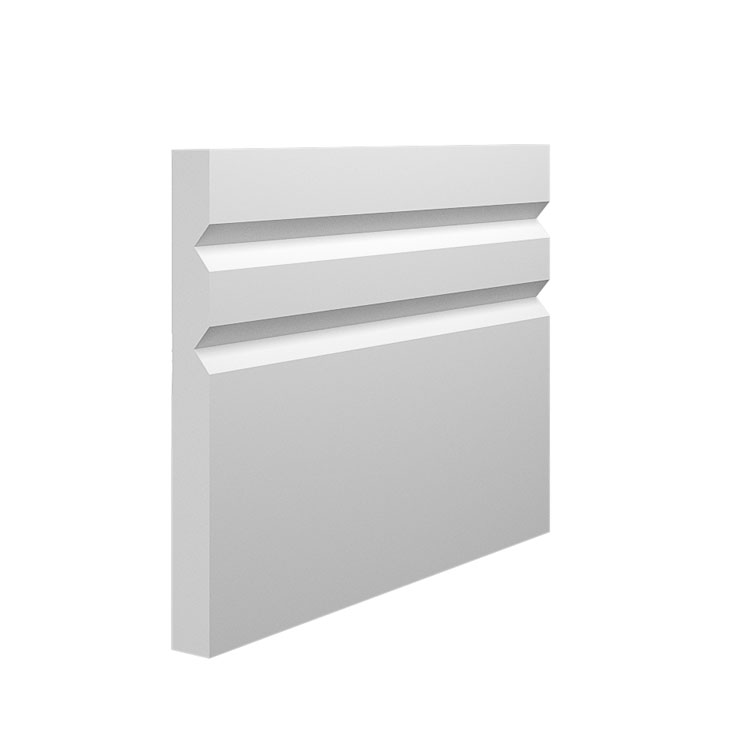
Queen
Two distinct V channels with deeper projection. The layering creates substantial shadow play that changes character as daylight shifts.
Suitable for spaces where you want the skirting to register as an architectural feature.
View Queen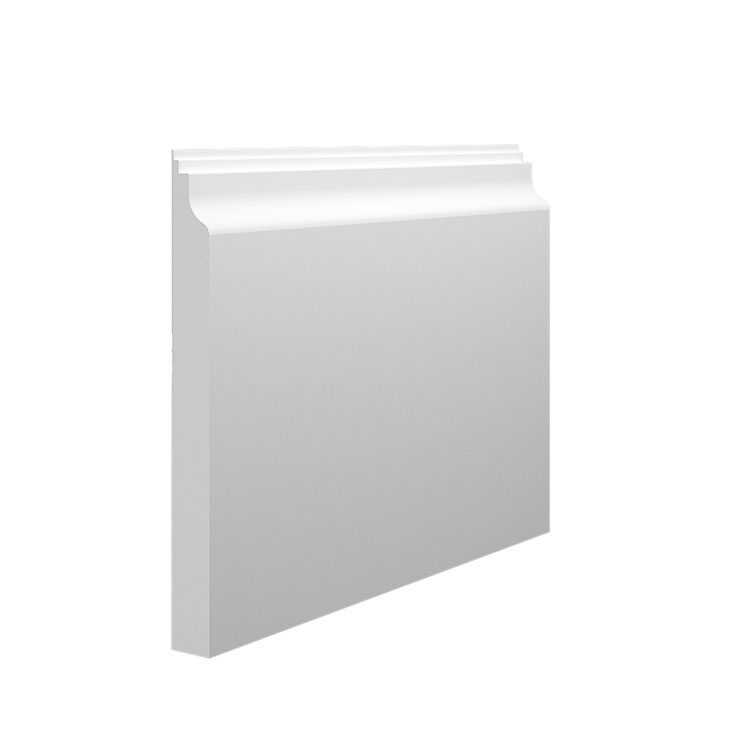
Jive
Multiple horizontal sections combined with a curve creates visual rhythm along the wall. Detail is present but compressed, making it versatile across room types.
Works in both minimal and more decorated spaces without dominating.
View JiveThese stepped designs rely on precise cuts and clean edges. Installation quality matters more than with forgiving traditional profiles.
Grooved profiles and LED integration
Linear grooves cut into the face create precise shadow lines. Some accommodate LED strip lighting, transforming skirting into an indirect light source.

15mm Grooved
Single linear groove cut horizontally across the face. The 15mm groove accommodates LED strip lighting for indirect illumination.
The groove conceals the LED strip while allowing light to escape along the floor line.
View 15mm Grooved
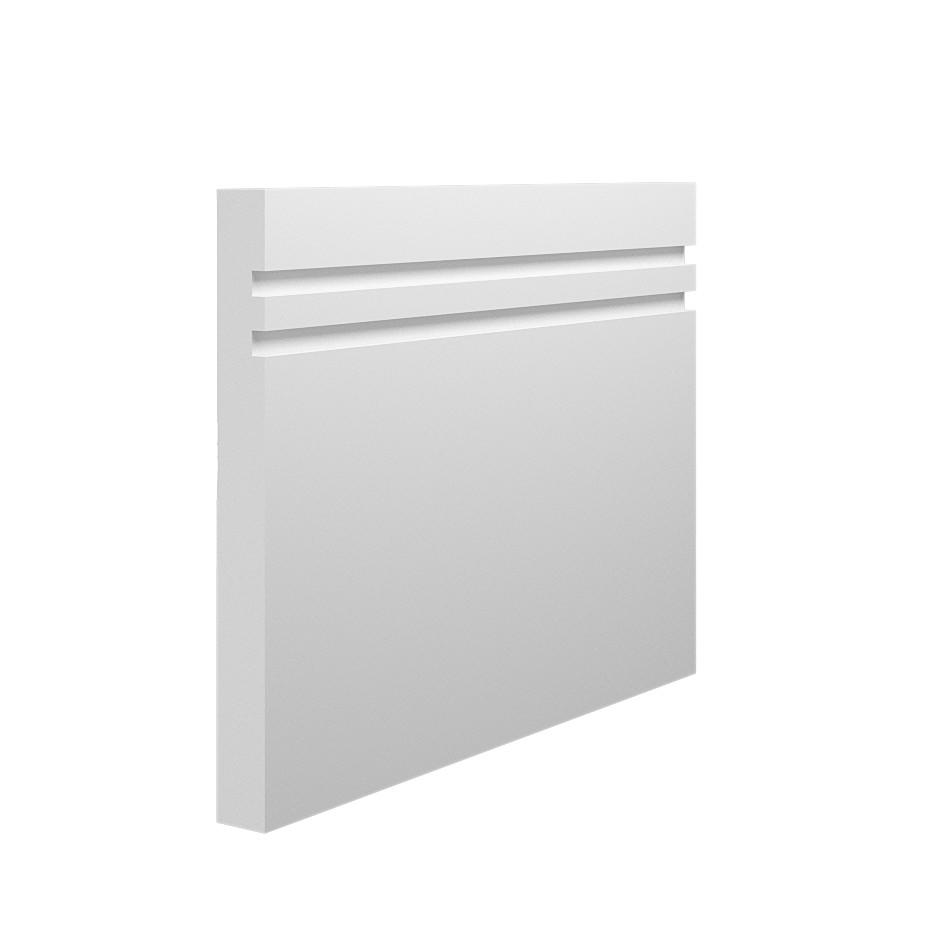
Grooved 2 Square
Two parallel grooves set into a square-edged board. The top edge remains sharp, creating a contemporary line where skirting meets wall.
Middle ground between plain square boards and more detailed profiles.
View Grooved 2 Square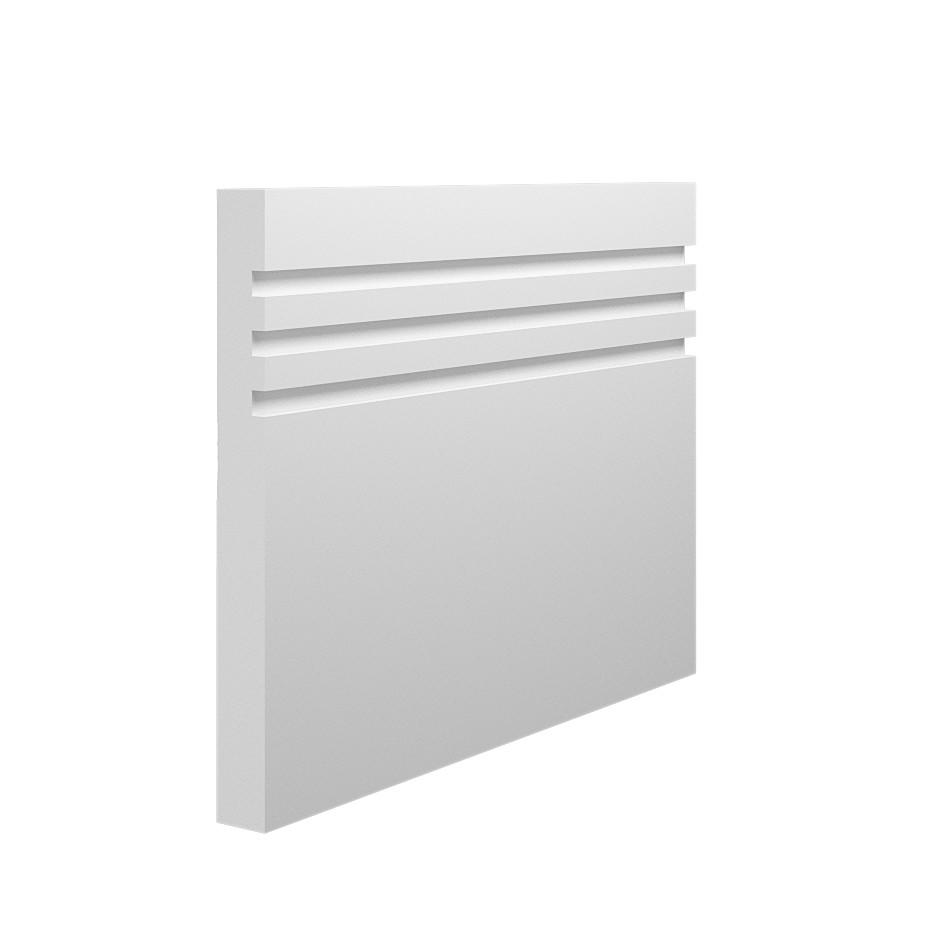
Grooved 3 Square
Three parallel grooves creating more rhythm. Square top edge and multiple linear cuts make this distinctly modern.
More detailed than the two-groove version but maintains geometric language.
View Grooved 3 Square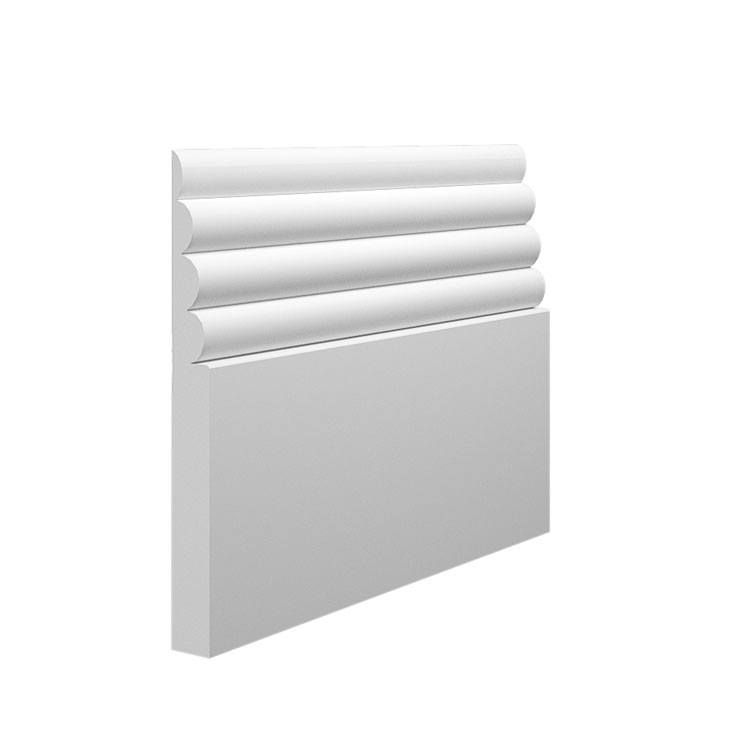
Cloud
Multiple grooves creating ripple effect. The repeated horizontal detail reads as pattern through shadow - great for kids rooms!
Emphasises room width while maintaining contemporary character.
View CloudHeight changes proportion
Traditional UK skirting sits around 100-145mm height. Modern profiles often go taller, amplifying detail and altering room proportions.

Taller profiles (194mm+) work best in rooms with 2.7m+ ceilings. In smaller rooms or lower ceilings, keep to 145-170mm to avoid overwhelming the space.
Minimal modern profiles
Some achieve contemporary character through restraint: clean edges, minimal detail, material quality carrying the design.
Colour changes character

White remains the default, letting geometry read clearly. But modern profiles handle alternative skirting colours well. Dark greys, charcoal, or black create strong horizontal lines that emphasise room proportions.
These colours work particularly well with stepped profiles where shadow lines benefit from added contrast. Matching skirting colour to wall colour makes the profile read as texture rather than trim.
Surface preparation matters. High density MDF provides smoother base than standard MDF. Multiple primer coats and careful sanding create the surface these designs need. Matte and eggshell finishes work better than gloss.
Installing modern skirting
Modern profiles with square edges require precise installation. Mitred corners need clean cuts. Any gaps show more on geometric designs than on curved profiles.
Wall preparation
Modern skirting assumes reasonably true walls and floors. The cleaner the profile geometry, the less it forgives imperfections.
Corner joints
External corners need precise mitres. Internal corners benefit from coping cuts on detailed profiles.
LED integration
Electrical work needs planning before skirting goes up. Grooves hide LED strips but not power supplies.
When traditional profiles work better
Not every space suits modern skirting. Period properties with ornate cornicing look awkward with geometric skirting boards. The mismatch creates tension rather than coherence.
Period properties
Properties with ornate cornicing need traditional profiles like Ogee or Torus to maintain room character.
Traditional features
Rooms with original fireplaces, picture rails, or detailed door frames work better with curves.
Listed buildings
Conservation areas might have restrictions. Check requirements before altering period character.
Choosing modern skirting means accepting that detail will show. These profiles rely on precision, clean execution, and appropriate context.
Samples help when you're uncertain. Most profiles look different on a wall than in images. The way shadow falls and how height reads only becomes clear in context.









